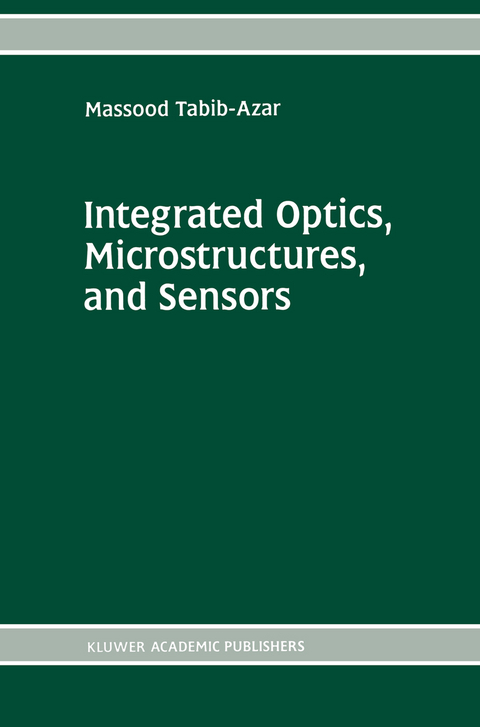
Integrated Optics, Microstructures, and Sensors
Seiten
2014
|
Softcover reprint of the original 1st ed. 1995
Springer-Verlag New York Inc.
978-1-4613-5958-6 (ISBN)
Springer-Verlag New York Inc.
978-1-4613-5958-6 (ISBN)
Controlling the mechanical, electrical, magnetic, and optical properties of materials by advanced fabrication methods (Le. ; Molecular Beam Epitaxy and Metal-Organic Chemical Vapor Deposition) has become the new paradigm in our research era. Sensors, being the most vital part of the electronic data processing and decision making machines, stand to gain the most from engineering of the properties of materials. Microfabrication technology has already contributed significantly to the batch fabrication of micro-sensors with higher over all qualities compared to their counterparts that are fabricated using other methods. Batch fabrication of micro-sensors i) results in more uniform properties of co-fabricated devices, ii) nearly eliminates the need for characterization of individual sensors, and iii) eliminates a need for laborious alignment procedures. A less obvious benefit of using microfabrication methods is the possibility of precise control over the dimensions of the sensor. This control enables engineering of some of the properties of the material which affect the sensor's operation. There are many examples of this in the literature. Optical sensors are known to have superior properties over their counterparts that use other (i. e. ; electrostatic and magnetic) means of detection. To name a few, these advantages are: i) immunity to electromagnetic interferences, ii) higher sensitivities compared to the other types of sensors, iii) simplicity of operation principles, and iv) simplicity of overall construction.
Section I: Integrated Optics.- 1 Two and One Dimensional Dielectric Wave Guides.- 2 Optical Properties of Materials.- 3 Passive Optical Devices.- 4 Active Optical Devices.- 5 Complete Waveguide Structures.- Section II: Microstructures and Fabrication Methods.- 1 Fabrication of Microstructures.- 2 Fabrication of Integrated Optics.- 3 Mechanics of Deformable Silicon Microstructures.- Section III: Optical Sensors.- 1 Sensing Means and Sensor Shells.- 2 Integrated and Fiber Optics Sensors.- 3 Force, Displacement, and Acceleration Sensors.- 4 Optical Temperature Sensors.- 5 Optical Chemical Sensors.- 6 Sensor Design Examples and Additional Considerations.- 7 Comparison Between Electric, Magnetic, and Optical Sensors.
| Reihe/Serie | The Springer International Series in Engineering and Computer Science ; 332 |
|---|---|
| Zusatzinfo | 2 Illustrations, black and white; XXI, 399 p. 2 illus. |
| Verlagsort | New York, NY |
| Sprache | englisch |
| Maße | 155 x 235 mm |
| Themenwelt | Naturwissenschaften ► Physik / Astronomie ► Optik |
| Technik ► Elektrotechnik / Energietechnik | |
| Technik ► Maschinenbau | |
| ISBN-10 | 1-4613-5958-9 / 1461359589 |
| ISBN-13 | 978-1-4613-5958-6 / 9781461359586 |
| Zustand | Neuware |
| Haben Sie eine Frage zum Produkt? |
Mehr entdecken
aus dem Bereich
aus dem Bereich
Grundlagen - Verfahren - Anwendungen - Beispiele
Buch | Hardcover (2022)
Hanser, Carl (Verlag)
49,99 €
Grundlagen und Anwendungen
Buch | Hardcover (2023)
Hanser, Carl (Verlag)
59,99 €


